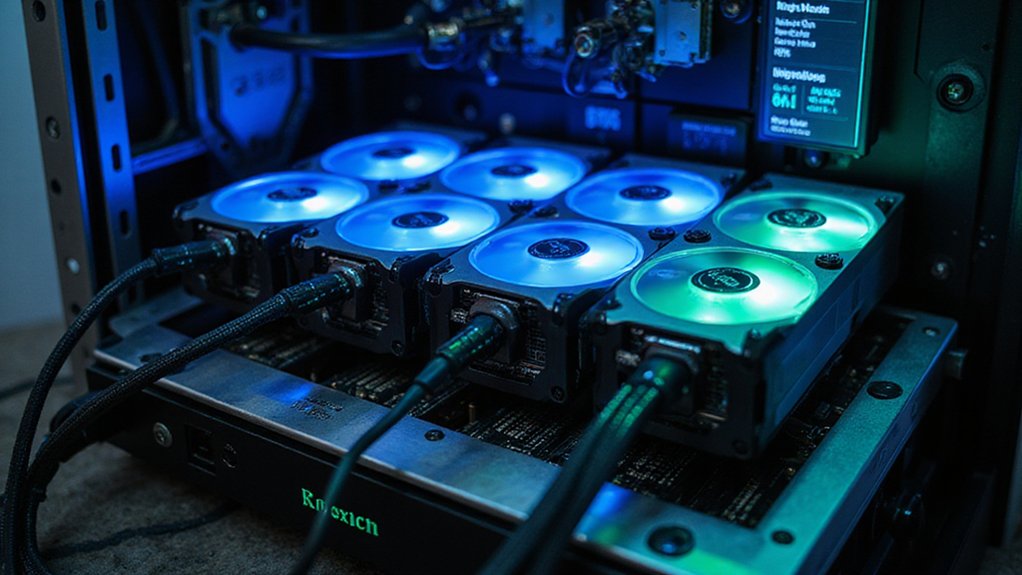Ripple functions simultaneously as a cryptocurrency (XRP) and a digital payment protocol enabling swift, cost-effective international transfers. Founded in 2012, it stands at the curious intersection of traditional banking and blockchain innovation, processing 1,500 transactions per second—quite the feat in the notoriously sluggish world of cross-border finance. Its adaptability to central bank digital currencies positions Ripple as something beyond mere digital cash; this financial chameleon continues evolving in surprising ways.

A digital pioneer in the increasingly congested blockchain landscape, Ripple stands apart as a financial technology company that has deftly positioned itself at the intersection of traditional banking and cryptocurrency innovation. Originally conceived as RipplePay in 2004 by Ryan Fugger, the enterprise underwent several iterations—rebranding as OpenCoin in 2012 and later as Ripple Labs in 2013—before ultimately settling on the sleeker moniker “Ripple” in 2015, a simplification that paralleled its laser focus on blockchain-based financial solutions.
The technological infrastructure underpinning Ripple’s operations is the XRP Ledger (XRPL), a blockchain protocol developed by David Schwartz, Arthur Britto, and Jed McCaleb prior to the company’s official launch. This ledger facilitates the secure recording of various transactions, from straightforward payments to more complex asset exchanges. The platform achieves impressive performance with the capacity to process 1,500 transactions per second, making it vastly more scalable than many competing cryptocurrencies. By 2013, the company secured angel funding round closing at $2.5 million from notable investors, providing crucial capital for early development. McCaleb would later depart to establish Stellar—essentially a fork of the Ripple protocol—in a move that industry observers might characterize as both inevitable and somewhat foreseeable in the mercurial world of cryptocurrency development.
Ripple’s product suite centers on cross-border transactions, with Ripple Payments emerging as its flagship offering. The system leverages the XRP token to provide on-demand liquidity, enabling financial institutions to sidestep the cumbersome pre-funding requirements that traditionally encumber international transfers. This approach has positioned Ripple as a formidable competitor to legacy systems like SWIFT, which—let’s be frank—operate with all the speed and efficiency of a medieval courier service by comparison. Once acquired, investors often transfer their XRP to hardware wallets for enhanced security and greater control over their private keys.
Among the cryptocurrency hierarchy, Ripple consistently maintains a position within the top ten by market capitalization, a proof of its utility and institutional adoption. The company primarily generates revenue through its cross-border payment and crypto liquidity services, while simultaneously working to reduce transaction costs and settlement times for its partners.
Ripple’s embrace of central bank digital currencies (CBDCs) further demonstrates its adaptability in an ever-evolving financial ecosystem where tomorrow’s monetary innovations often render today’s revolutionary technologies obsolete.
Frequently Asked Questions
How Secure Is Ripple’s Network Against Cyber Threats?
Ripple’s network boasts robust security through its consensus protocol, validating transactions in mere seconds—a stark contrast to Bitcoin’s plodding verification times.
The Unique Node List architecture, while raising centralization eyebrows, provides formidable protection against most conventional cyber threats.
Their forward-thinking quantum-resistant cryptography implementations (including Hash-Based and Lattice-Based algorithms) position XRP advantageously against future quantum computing threats—though regulatory hurdles may ultimately prove more challenging than technical ones.
Can Ripple Be Mined Like Bitcoin?
No, Ripple (XRP) cannot be mined like Bitcoin.
Unlike Bitcoin’s proof-of-work system, Ripple pre-mined all 100 billion XRP tokens at launch.
The network utilizes a consensus mechanism via trusted validators rather than competitive mining.
This architecture—somewhat heretically in cryptocurrency circles—prioritizes transaction speed and energy efficiency over decentralized token generation.
Those seeking to acquire XRP must purchase it through exchanges, as mining opportunities (despite what dubious online advertisements might suggest) simply don’t exist.
What Are Ripple’s Environmental Impacts Compared to Other Cryptocurrencies?
Ripple’s consensus mechanism stands as a paragon of environmental efficiency in the crypto landscape.
Unlike Bitcoin’s energy-guzzling proof-of-work system (which consumes enough electricity to power small nations), Ripple operates without mining—reducing its environmental footprint to negligible levels.
This fundamental architectural difference allows Ripple to process transactions with fractional energy requirements compared to traditional cryptocurrencies, positioning it as environmentally sustainable in an industry increasingly scrutinized for its carbon emissions.
How Does Ripple Handle Transaction Privacy?
Ripple’s approach to transaction privacy reflects the classic blockchain conundrum: transparency versus confidentiality.
The XRP Ledger makes all transactions publicly visible—hardly ideal for the privacy-conscious—while offering mere pseudonymity through cryptographic addresses.
Some enhancements exist (blinded tags, anyone?), and researchers toy with path mixing concepts, but these remain peripheral adjustments to a fundamentally transparent system.
For those seeking genuine transaction opacity, XRP remains decidedly non-optimal.
What Regulatory Challenges Does Ripple Currently Face?
Ripple’s regulatory landscape remains fraught, despite the SEC dropping its appeal in the XRP securities case.
The firm still navigates murky waters as global jurisdictions adopt disparate approaches to crypto regulation.
While Congress contemplates thorough legislation, Ripple confronts the challenge of operating within an evolving framework—balancing innovation against compliance demands.
Their advocacy for clarity based on existing statutes, rather than expanded regulatory authority, reflects a strategic positioning amid persistent uncertainty.









